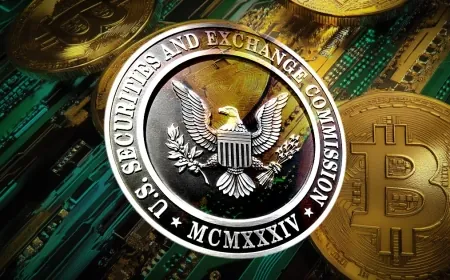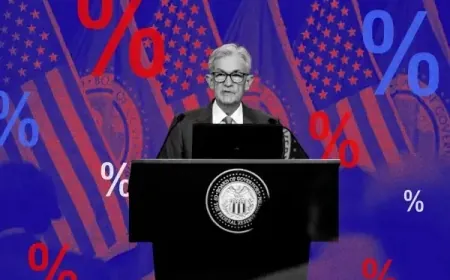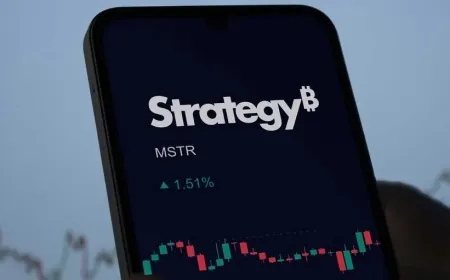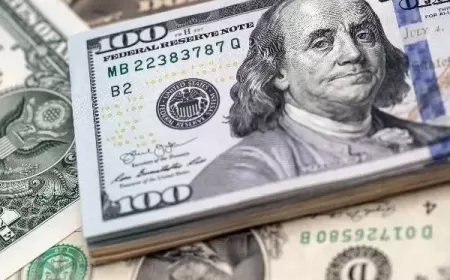Bitcoin Eyes $240K as Dollar Weakens and Global Liquidity Surges
A falling U.S. dollar and rising global liquidity are creating conditions that may push Bitcoin well beyond current levels in the months ahead.

Bitcoin’s performance this year has already outpaced most asset classes. Still, a closer look at two deep-running trends in global finance — the decline of the U.S. dollar and a coordinated return to monetary easing — suggests the current momentum may only be the opening act.
As of early August, Bitcoin is hovering around $118,000, a level that reflects strong investor appetite but hasn’t yet signaled full euphoria. What stands out isn’t just the price, but the backdrop forming behind it — one that closely resembles the conditions seen ahead of previous long-term rallies.
A Dollar Under Pressure
The U.S. dollar’s decline over the past few months has been steep — and quietly significant. The Dollar Index (DXY), a widely followed measure of the dollar’s value against major currencies, has dropped below its 200-day average in a move that hasn’t been this pronounced in over two decades. That development hasn’t gone unnoticed by macro-focused investors, especially those tracking assets like Bitcoin.
There’s no shortage of historical data showing Bitcoin’s tendency to gain when the dollar weakens. In past cycles — particularly in 2013, 2017, and 2021 — extended periods of dollar softness preceded some of the asset’s strongest price movements. The logic isn’t complicated: as the value of fiat money slips, capital often seeks out assets not tied to any one government or central bank, especially those with hard supply limits.
Monetary policy adds more weight to the picture. With inflation retreating from its post-COVID peaks and growth moderating, expectations are firming around a potential shift in the U.S. interest rate path. Market futures have begun pricing in at least one rate cut by the end of the year, and possibly more by mid-2025. A policy reversal of that kind would increase the odds of further dollar depreciation — and with it, a stronger bid for non-sovereign assets like Bitcoin.
That said, the relationship isn’t automatic. Risk-off events can lead to temporary selloffs in both Bitcoin and the dollar. But when viewed through a medium- to long-term lens, a weaker dollar has consistently aligned with Bitcoin strength.
Liquidity Is Expanding — Fast
While the dollar moves one way, global liquidity is moving the other — upward. Data from July shows the M2 money supply across the 21 largest central banks has surpassed $55.5 trillion, returning to an upward trend after stagnating through most of 2023.
What matters isn’t just the amount of liquidity, but how it behaves. In every previous Bitcoin cycle, increases in global money supply have preceded surges in price. More capital sloshing around doesn’t guarantee investors will flock to Bitcoin, but it does increase the likelihood of capital entering speculative or asymmetric-return assets — and Bitcoin, with its fixed issuance schedule and growing institutional legitimacy, is high on that list.
Recent policy decisions back that up. India’s central bank has lowered its lending rate and loosened capital requirements. China has taken steps to support domestic growth with easier credit. Similar signals are emerging from other major economies — a clear sign that central banks are shifting back toward stimulus, albeit in more targeted ways than during the pandemic years.
It’s a contrast to the tightening cycle that defined 2022 and most of 2023. That cycle put pressure on Bitcoin and other risk assets, drying up liquidity and reducing investor appetite. What’s happening now is the early stage of the reversal.
Supply Tightening Meets Demand Potential
The liquidity backdrop isn’t the only tailwind. Bitcoin’s most recent halving, which occurred in 2024, has once again reduced the number of new coins entering circulation. The combination of limited new supply and increasing liquidity is one that traders and fund managers have studied closely in past cycles — because it tends to be the spark for aggressive upward moves.
That dynamic is already visible in the numbers. Market data shows a growing share of Bitcoin being pulled into long-term storage wallets, while daily issuance remains at its post-halving lows. Meanwhile, inflows into Bitcoin ETFs and crypto-focused funds have ticked higher over the past two quarters, suggesting renewed institutional interest.
Historically, even a modest rise in global M2 — around 1% — has been followed by Bitcoin gains of 50% or morewithin 12 to 18 months. With the current rate of expansion, and Bitcoin already in an upward trend, that historical precedent points toward a price in the $220,000 to $250,000 range, assuming investor behavior remains consistent.
Of course, none of this is automatic. If inflation re-accelerates, central banks may pivot again and tighten policy — a move that could pull liquidity back out of the system and put pressure on risk assets. There’s also the question of capital competition: other asset classes, particularly equities and real estate, are also poised to benefit from easier monetary conditions.
Conditions Resemble Past Bull Market Foundations
There’s nothing sensational about the current Bitcoin narrative — and that’s exactly why it’s notable. Unlike previous surges driven by celebrity endorsements, altcoin hype, or retail FOMO, this cycle is grounded in macroeconomic realities. The kind of capital that’s now entering the market isn’t just chasing quick returns — it’s reallocating in response to broader shifts in the global financial system.
The dollar is weaker. Central banks are easing. Bitcoin’s supply is tightening. And investor behavior is beginning to shift in line with those developments.
That’s not a prediction. It’s an observation — one that’s been seen before, and one that appears to be building again.
Also Read: Can XRP Become the Next Bitcoin or Is It Already Too Late?





























































